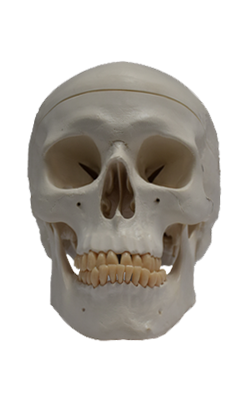Main Model

CRANIUM : Occipital bone

Occipital Aspect of Cranium
The posterior or occipital aspect of the cranium is composed of the occiput (L. back of head, the convex posterior protuberance of the squamous part of the occipital
bone), parts of the parietal bones, and mastoid parts of the
temporal bones (Fig. 7.7A).
The external occipital protuberance, is usually easily
palpable in the median plane; however, occasionally (especially in females) it may be inconspicuous. A craniometric
point defi ned by the tip of the external protuberance is the
inion (G. nape of neck) (Figs. 7.1A, 7.4A, and 7.6; Table 7.1). The external occipital crest descends from the protuberance toward the foramen magnum, the large opening in the
basal part of the occipital bone (Figs. 7.1C, 7.7B, and 7.9).
The superior nuchal line, marking the superior limit of
the neck, extends laterally from each side of the protuberance; the inferior nuchal line is less distinct. In the center
of the occiput, lambda indicates the junction of the sagittal
and the lambdoid sutures (Figs. 7.1A, 7.6, and 7.7A; Table
7.1). Lambda can sometimes be felt as a depression. One or
more sutural bones (accessory bones) may be located at
lambda or near the mastoid process (Fig. 7.4B & C).